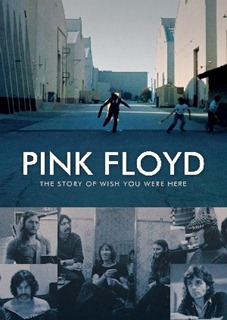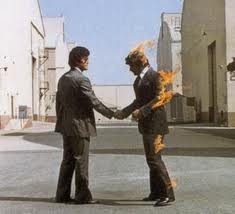Pink Floyd: The Story of Wish You Were Here
Wish You Were Here was the follow up album to Pink Floyds fist massively successful commercial album, Dark Side Of The Moon which, among others great songs, contained perhaps their signature tune, “Money”. Released in September 1975 it is the favorite album of many of the band members as well as fans. When it hit the streets it went straight to number one on the album charts in both the U.K. and the U.S.
From the first four notes – the foundation of the song – it invokes a sadness, which was the story of Syd Barrett. Recorded at London's Abbey Road Studios over numerous sessions. Although some of these sessions were problematic,it was Roger Waters' idea to split the centerpiece track "Shine On You Crazy Diamond" in two and join each half with three new compositions. "Shine On" was a tribute to Barrett, who, coincidentally, made an impromptu visit to the studio while it was being recorded.
Wish You Were Here is the second Pink Floyd concept album written entirely by Waters. It reflects his feeling that the friendship that had cemented the band together was, by then, largely absent. Steeped deeply in themes of absence, the greed of the music business and Barrett. The album begins with a long instrumental preamble and segues into the lyrics for "Shine On You Crazy Diamond", a tribute to Syd Barrett—whose mental breakdown had forced him to leave the band several years before. Barrett is fondly recalled with lines such as "Remember when you were young, you shone like the sun" and "You reached for the secret too soon, you cried for the moon".
This simultaneous release on Blu-Ray and DVD is the authorized story of the album and was made with the full involvement of the members of the band. The film is chalk full of new interviews with Roger Waters, David Gilmour and Nick Mason and archive interviews with the late Richard Wright. Also included here is sleeve designer Storm Thorgerson, guest vocalist Roy Harper and front cover “burning man” Ronnie Rondell and other personnel involved in the making of the album.
the band members discuss the early difficulties of the early recording sessions and how the decision to split “Shine On” became the catalyst. Other interesting insights revealed through the interviews is the fact that before Barrett left the band, he’d pretty much given up or abandoned wanting to make “hit” music. he didn’t want to make music for “Top Of The Pops” and ironically, the band members move the blame from the greed of the music business onto themselves as the main impetuous for wanting to make more commercially acceptable music, if not exactly “pop” songs.
The film is also full of excerpts from concerts and performances as well as bits of the band working out the parts.
Pink Floyd: The Story of Wish You Were Here is a fascinating documentary and fitting tribute to the band in the creation of the masterwork album. For casual fans and collectors and musicologists, this is one you will want to add to your collection. if you are an aspiring musician, then you’ll play this time and time again just for a peek at the creative concept.
Syd Barrett was active in music for only about seven years, recording four singles, the debut Pink Floyd album The Piper at the Gates of Dawn (and contributed to the second one), plus several unreleased songs with Pink Floyd. In 1969, Barrett released a solo single, "Octopus", which foreshadowed his first (of two) solo album, The Madcap Laughs (1970), which was recorded over the course of one year (1968–1969) with 4 different producers including David Gilmour and Roger Waters. Nearly two months after Madcaps was released, Barrett begun working on his second album, Barrett ,produced by Gilmour and Richard Wright, which would be released in late 1970, before going into self-imposed seclusion lasting more than thirty years. Barrett's innovative guitar work and exploration of experimental techniques such as using dissonance, distortion, and feedback had an enormous legacy not only by setting the direction that Floyd would take without him, but musicians from David Bowie to Brian Eno to Jimmy Page and more drawing influence.
After suffering from diabetes for several years, Barrett died at his home in Cambridge on 7 July 2006. He was 60 years old. The cause of death was pancreatic cancer. The occupation on his death certificate was given as "retired musician."According to local newspapers, Barrett left approximately £1.7 million to his two brothers and two sisters. This sum was apparently largely acquired from royalties from Pink Floyd compilations and live recordings featuring songs he had written while with the band.
Copyright © 2012 Robert Carraher All Rights Reserved





No comments:
Post a Comment